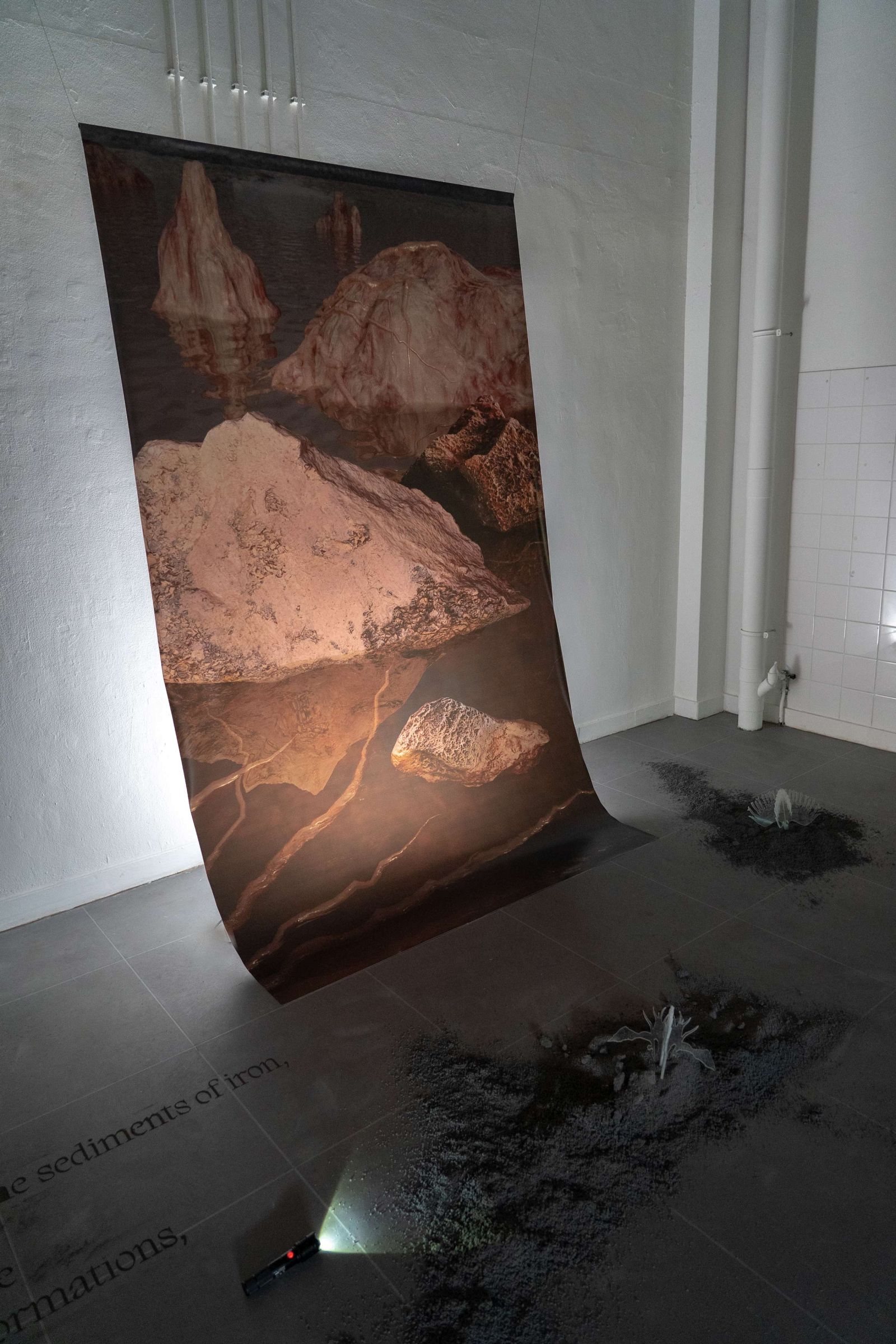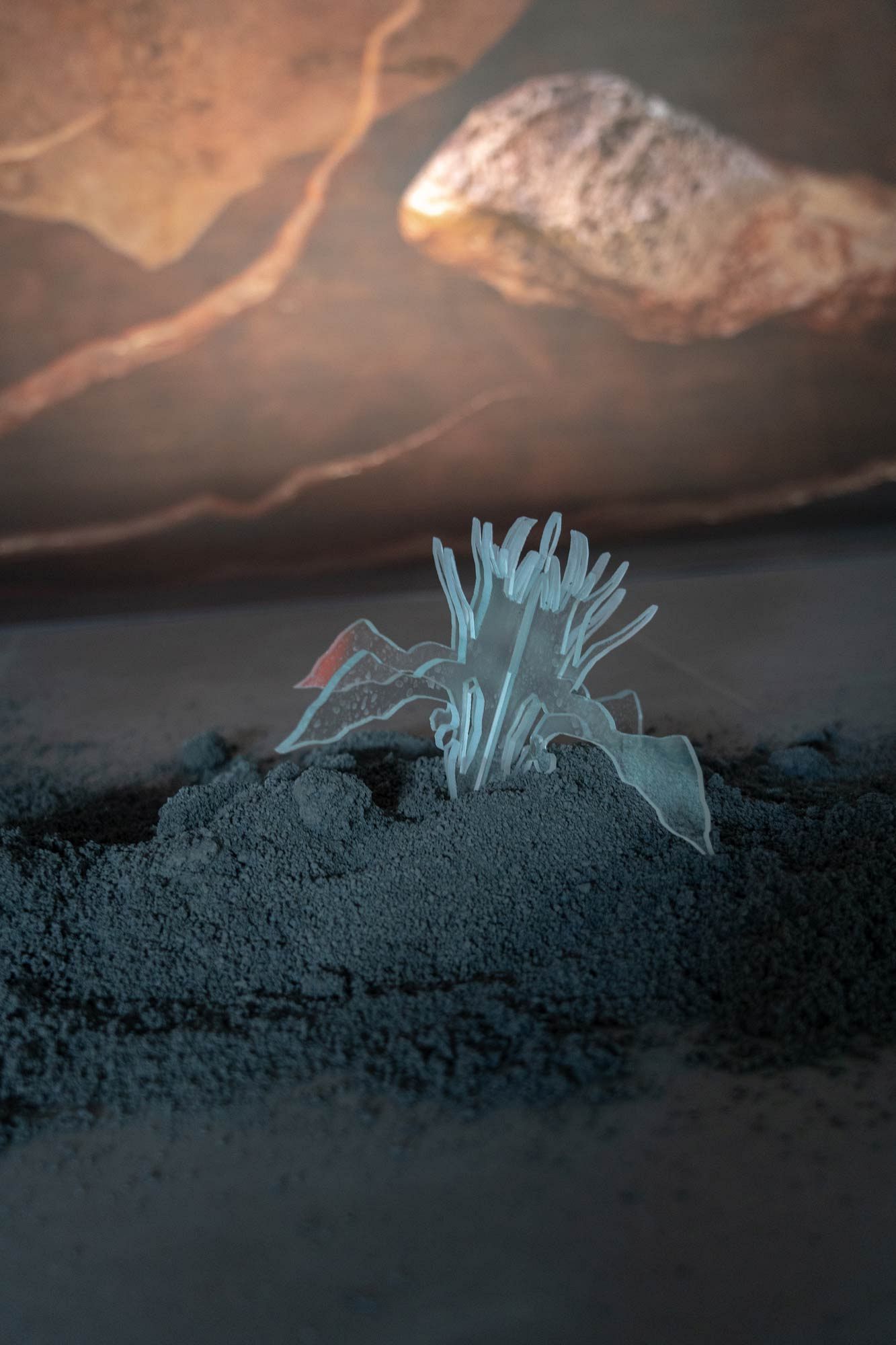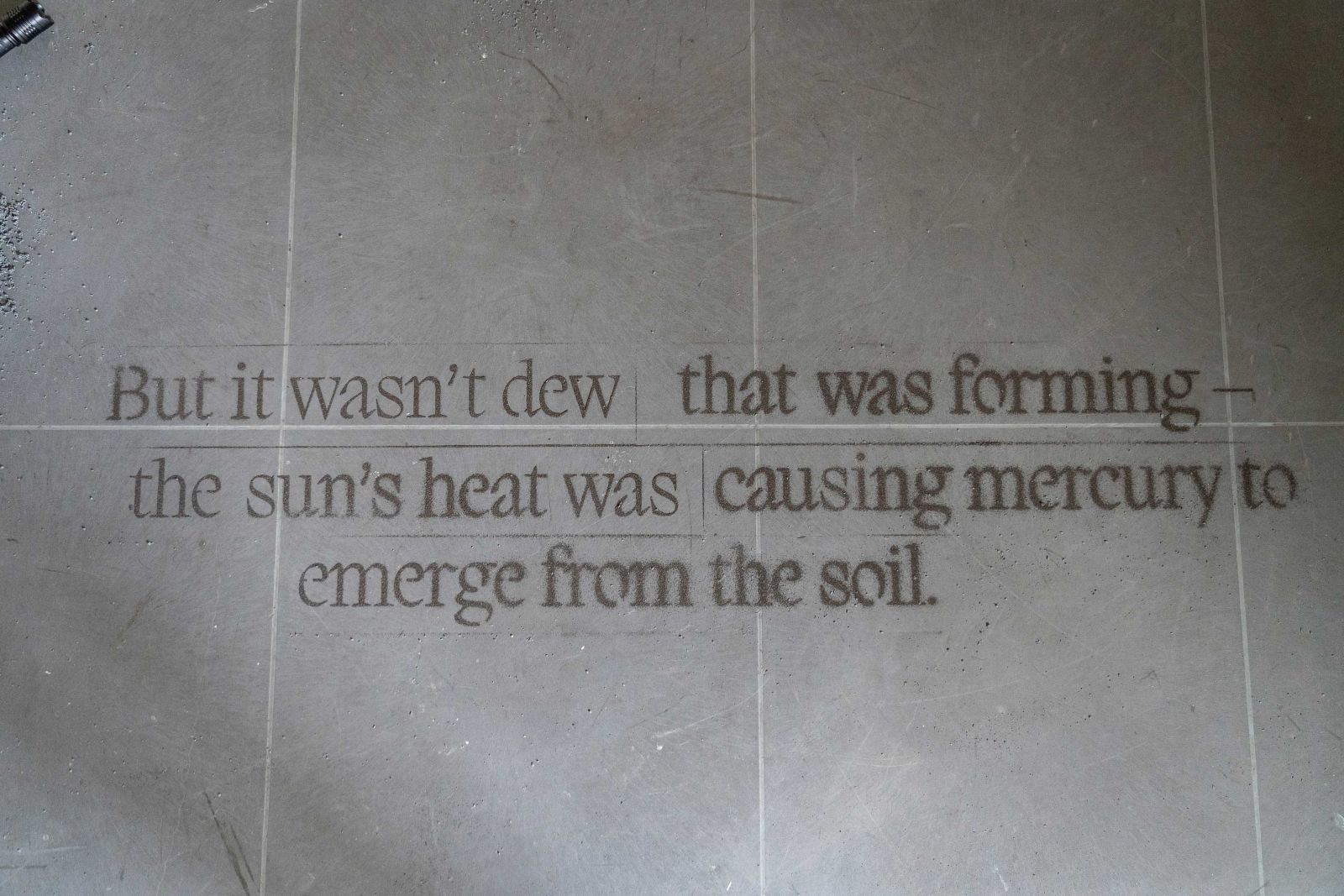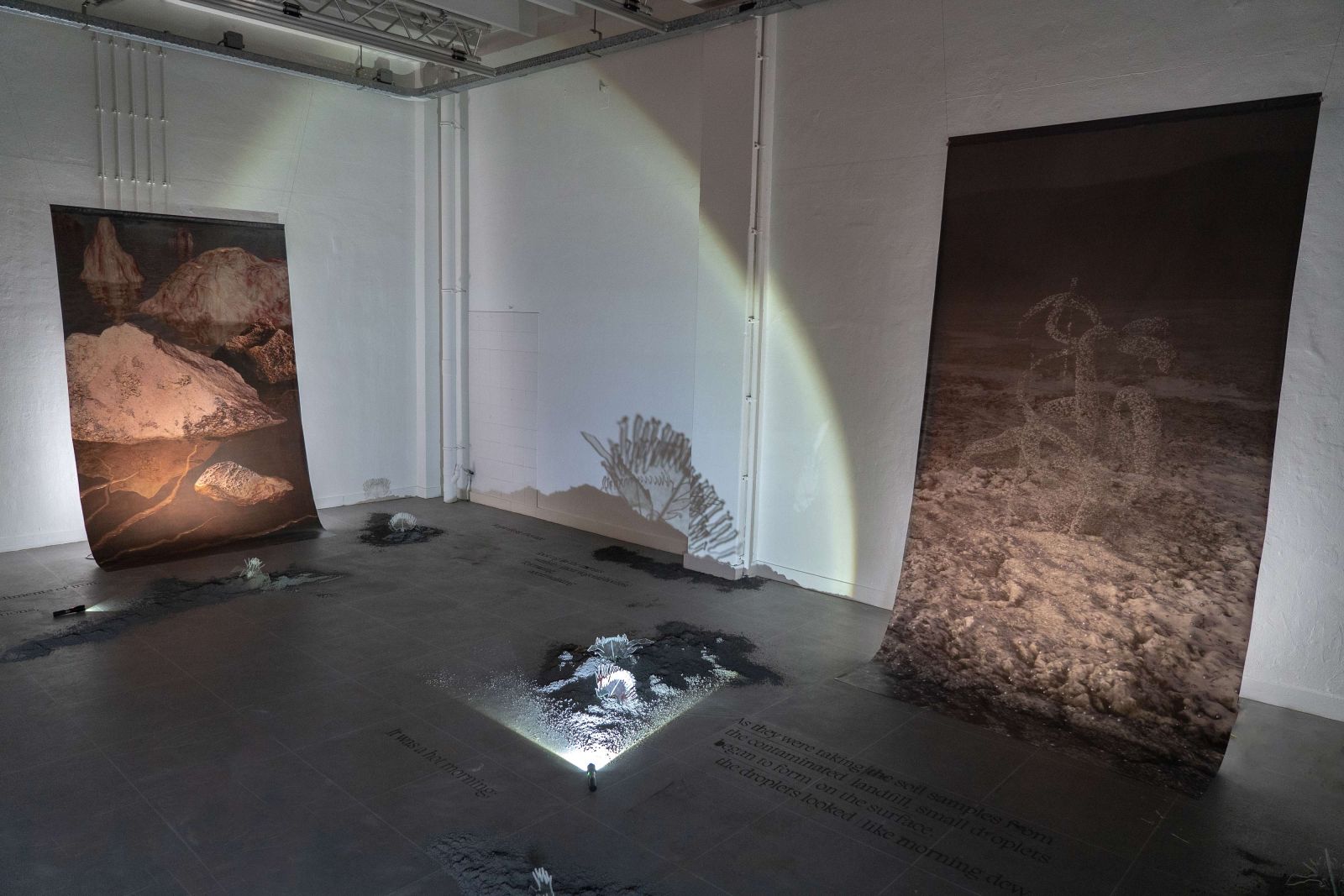
Michaela Cagáňová
Keywords: Queerecology, Phytoremediation, Plants
www.instagram.com/holo_s_/?igshid=mzrlodbinwflza%3d%3d
michaelacaganova.cargo.site/
Remains of the mining activity.
Tailings maps out a speculative landscape – one that seeks to illustrate an interspecies story between humans and plants. It takes its inspiration from fieldwork conducted within central-eastern Slovakia, around a landfill site now contaminated with heavy metals.
Heavy metals are those that naturally encrust the earth. With the human acts of mining, they can become extracted and, in excess, become toxic. Tailings tells a story that pivots upon the ability of certain plants to phytoremediate the soil – that is, to pull the heavy metals from the soil, to bind them, to lessen their toxicity.


The protagonist of this story is the sunflower. Possessing the ability of phytoremediation, the sunflower is able to accumulate and tolerate heavy metals – to lock them within their bodies, to withhold them from the vulnerabilities possessed by human bodies. [It was for this reason that sunflowers were employed in the wake of the Chernobyl catastrophe.]
Illustrating this strength of the sunflower, this installation offers a way to reconsider the hierarchy that we humans have constructed in relation to plants – a reconsideration that prompts us to question whether plants are as vulnerable as we, within our constructions, believe them to be. Through a process of speculation, this installation aims at a sensible shift – from a sensibility that is humano-centric towards one that is vegetal – to show, that is, how an interspecies collaboration can afford the sensations for approaching environmental catastrophes within a different light.
Tailings flirts with an idea of returning the power dynamic between humans and other species to where it might belong.
